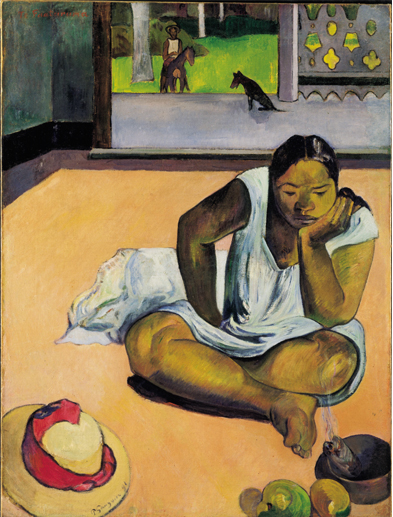Paul Gauguin painted himself compulsively, each time finding that he had turned into someone new. In the low-toned Self-Portrait of 1876 he is the truculent young bohemian, painter’s cap jauntily askew, treading in the footsteps of Manet and the rest of France’s heroic troop of “painters of modern life”. Nearly twenty years later, embarked on adventure in the islands of the South Pacific, he has undergone a sea-change. Portrait of the Artist with Idol of 1893 has him in a black-and-red striped matelot’s jumper, glowering out at the viewer with barely concealed hostility, as sullenly inscrutable as the tribal carving that stares over his shoulder. In Self-portrait with Manao tupapau, of the same year, he stands shiftily in front of a picture of one of his Tahitian mistresses. His blunt, broken-nosed features are blurred and he has the shifty, uncomfortable look of a man loitering with criminal intent.
But 1889, the trembling mid-point of his restless career, was also Gauguin’s annus mirabilis for self-reinvention. That was when he painted himself as a red-cloaked phantom stalking a barren Breton landscape in Bonjour Monsieur Gauguin; as a disembodied head with a halo, a latterday John the Baptist, floating in a field of japoniste decoration; and as a flame-haired representation of none other than Jesus Christ, lurking in a dark corner of rural France: Christ in the Garden of Olives, he called that picture, explaining to his sometime friend Vincent Van Gogh that “There is a road to Calvary that all we artists must tread”.
Gauguin’s road to Calvary was nothing if not circuitous, taking him from Paris and its environs to the village of Pont-Aven in deepest Brittany, Martinique and eventually the South Pacific. Tate Modern’s impressive and retrospective retraces that journey by assembling some 150 paintings, drawings, carvings and prints. The...


